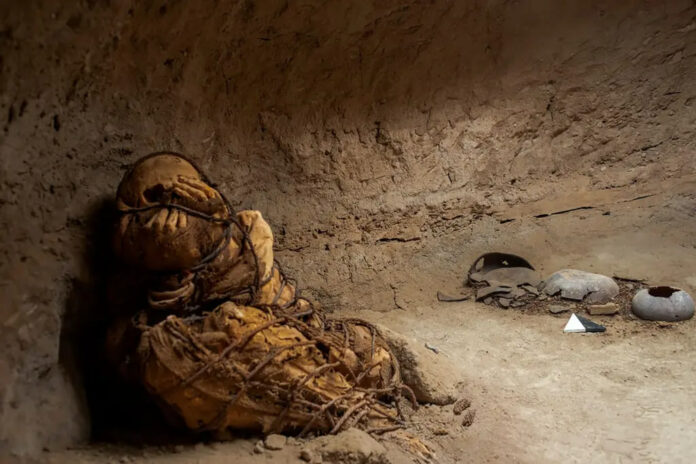In 2021, archaeologists from the National University of San Marcos discovered a mummy in an underground tomb in Cajamarquilla, Peru, which is located 15.5 miles from Lima. The mummy was uniquely bound in ropes with its hands covering its face, a pose believed to reflect a funeral custom from southern Peru. Preserved well, this mummy is estimated to be between 800 and 1200 years old. The tomb also housed ceramics, vegetable remains, and stone tools, indicating the historical significance of the site.
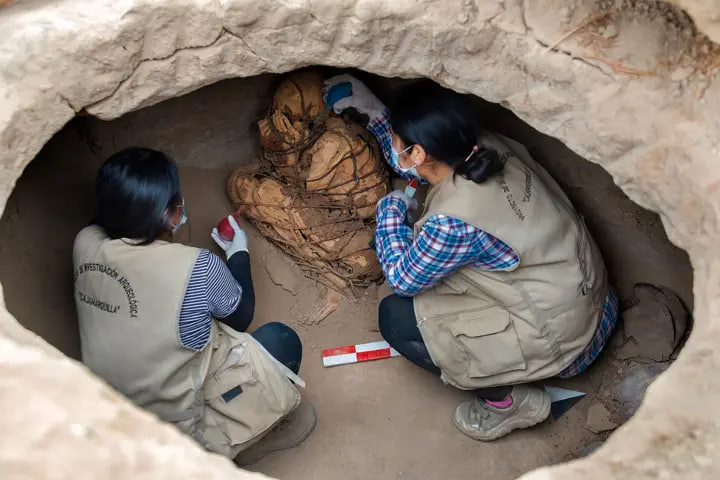
On a routine day at the archaeological site in Cajamarquilla, located 15.5 miles inland from the coastal and capital city of Lima, Peru, a team of archaeologists from the National University of San Marcos stumbled upon a peculiar mummy. The research team had not anticipated finding a mummy, but a surprising discovery awaited them.

The Bound Mummy
The mummy was found in a fetal position, fully bound with ropes, and its hands covering its face. While this pose might seem chilling at first glance, researchers explain that it is a funeral custom from southern Peru. Remarkably, the mummy is estimated to be between 800 and 1200 years old, predating the Inca civilization, which dominated the southern part of South America about 500 years ago.
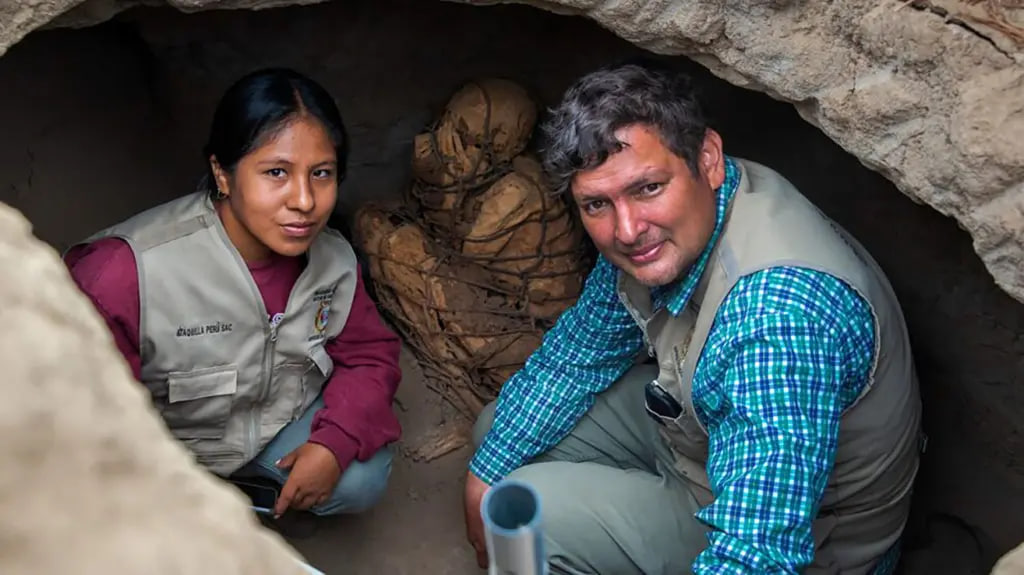
Associated Findings
The tomb contained not only the mummy but also other artifacts such as pottery, plant remains, and stone tools. Additionally, several marine mollusks were found around the tomb.
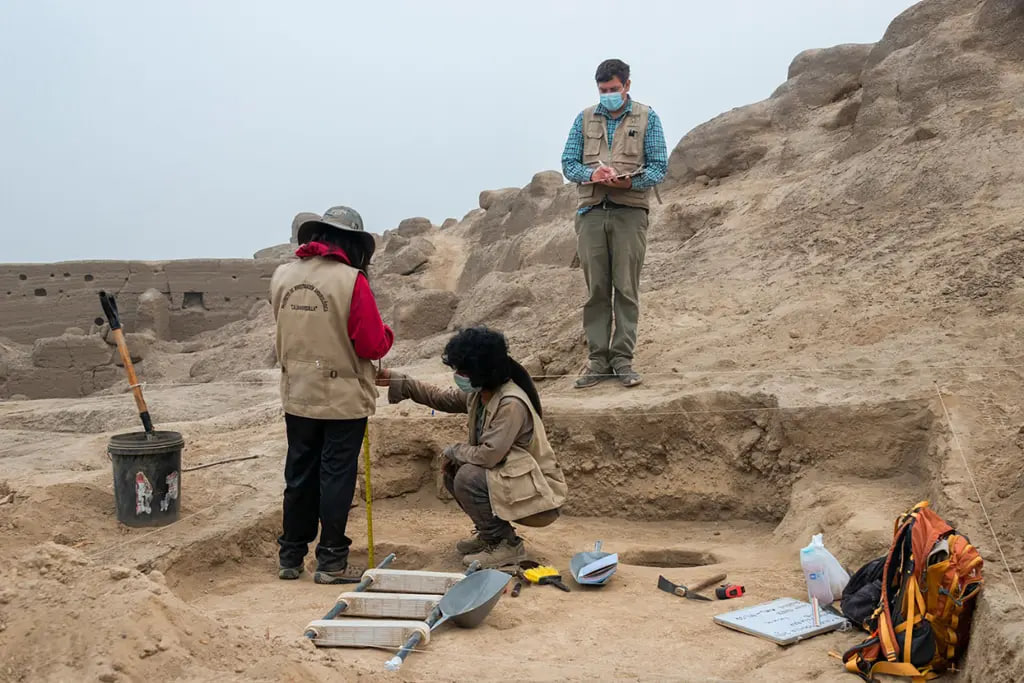
Archaeologist Yomira Huamán Santillán, a member of the team, mentioned that this discovery was completely unexpected. Researchers also noted that after the mummy was placed in the tomb, relatives would return repeatedly over many years to place food and offerings, including mollusks.
Historical and Cultural Significance
The man in the tomb is believed to have been about 25 to 30 years old at the time of death and likely held a significant role in his society. This find opens new insights into relationships and interactions during pre-Hispanic times.
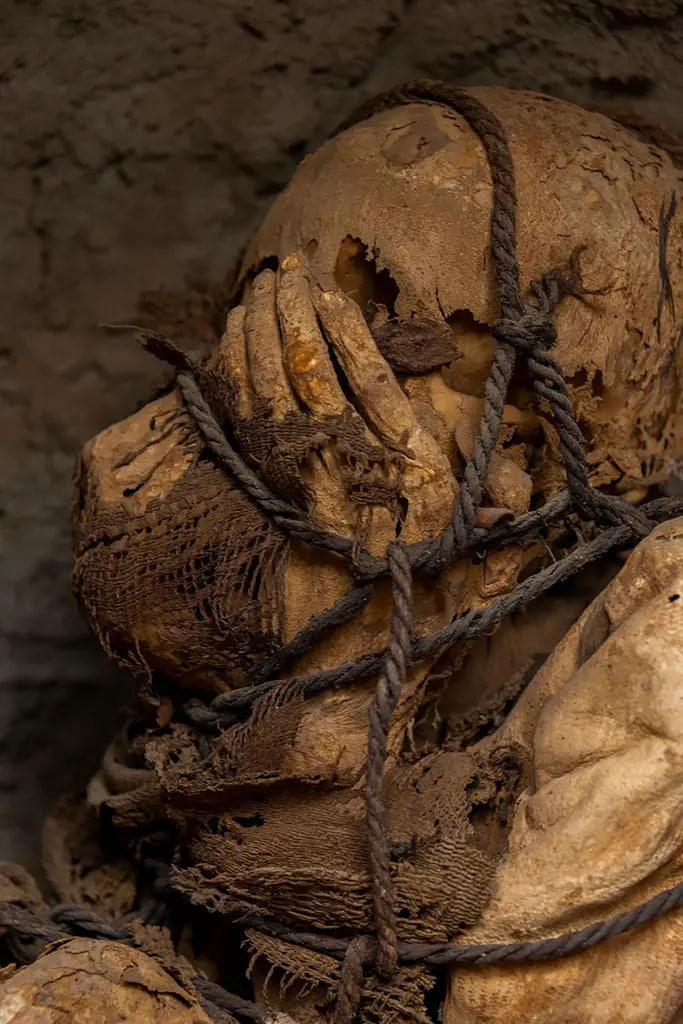
The area of Cajamarquilla, which had been continuously inhabited since the first millennium of the current era but was later abandoned, is thought to have been multiethnic, inhabited by people from both the coast and the mountains.
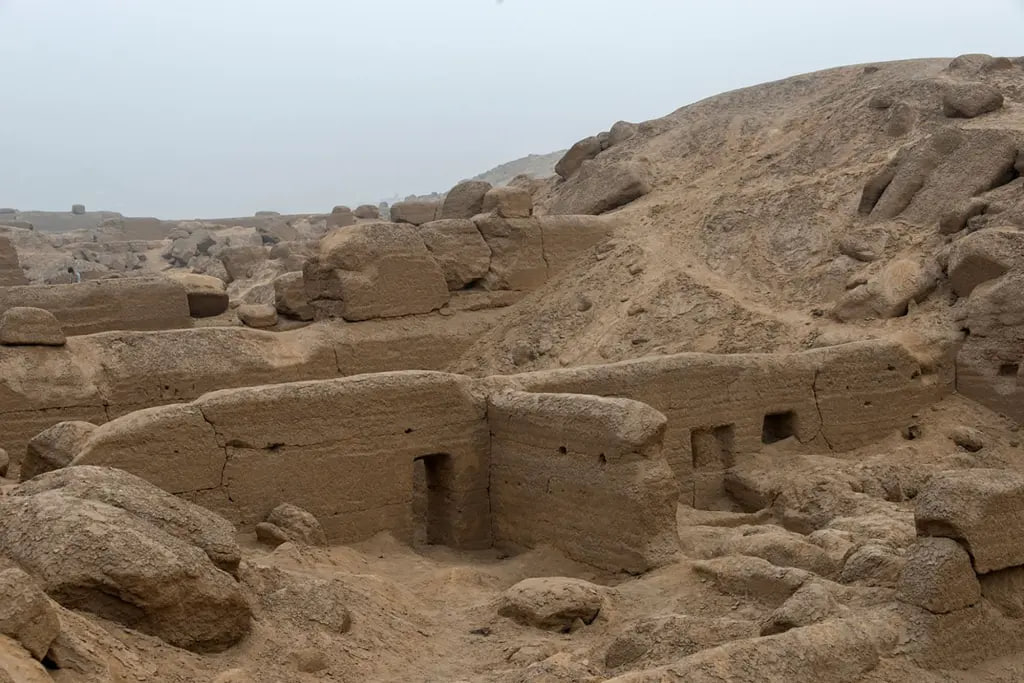
Conclusion: The Importance of the Discovery
This discovery not only sheds light on a part of pre-Columbian history in South America but also contributes to a deeper understanding of the customs, culture, and lives of ancient communities. As Pieter Van Dalen Luna, one of the leaders of the excavation, stated: “The discovery of this individual casts new light on the interactions and relationships in pre-Hispanic times.” With undeniable joy and satisfaction, the archaeological team made a significant historical story, continuing to drive our understanding of the past.



